Keep calm and carry on: the solar-powered car is on its way
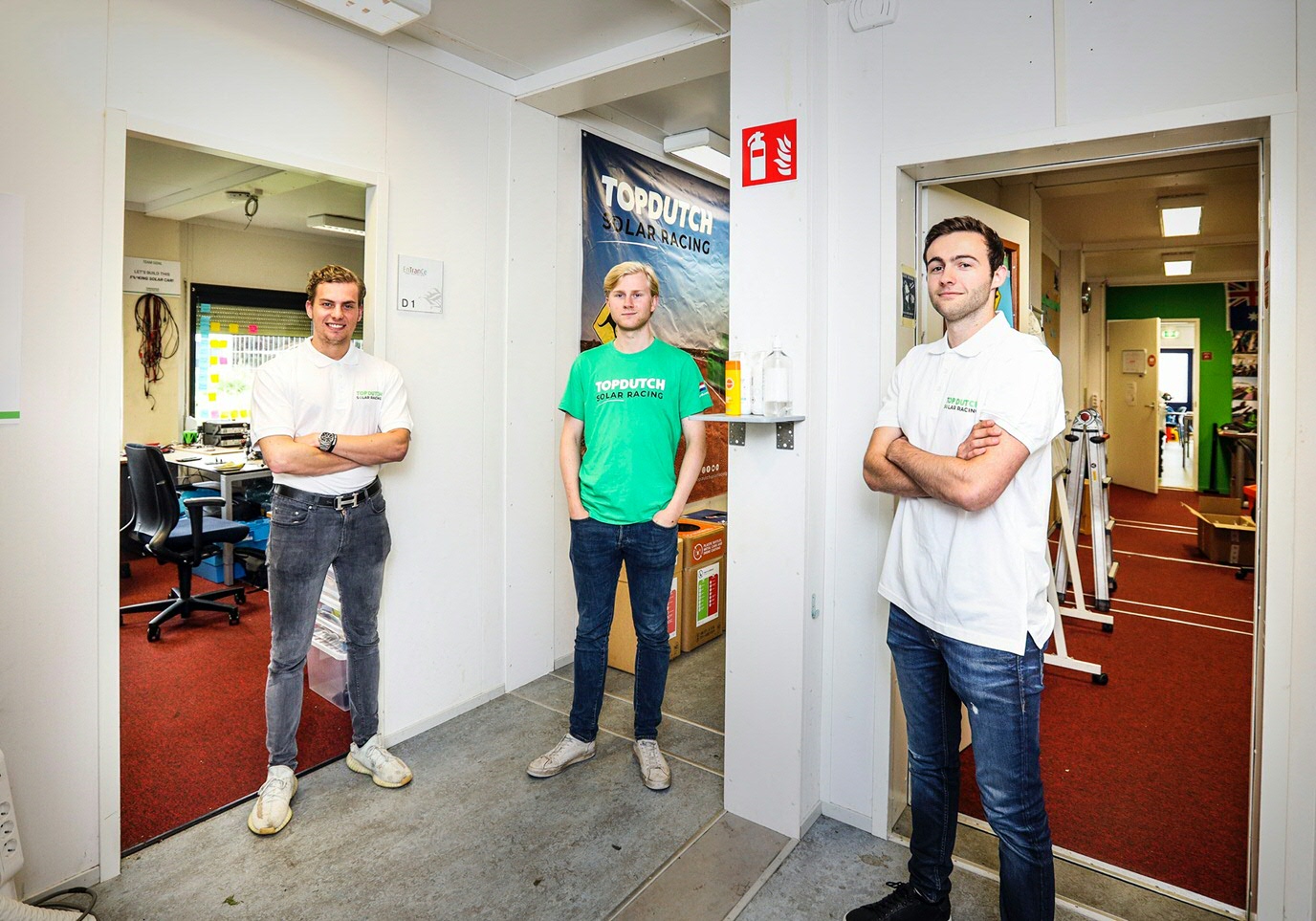
It takes a while to find at the Zernike Campus. The somewhat remote emergency building stands in sharp contrast to the hip title under which students of the UG, Hanze University of Applied Sciences, Noorderpoort, and Friese Poort are building their own solar-powered car: Top Dutch Solar Racing. But make no mistake – despite the shabby decor, this is a place of limitless ambition and perseverance.
Text: Riepko Buikema, Communication Office; photos: Henk Veenstra
On the desk lies an open bag of bread topped with sunflower seeds, in the corner hastily packed tents and sleeping bags, and over there a dingy sofa strewn with jeans and hoodies. If you did not know better, you would think you were in a student house.
Director
Aymar Berkel takes a quick bite of his toastie and begins to introduce the team members. Suddenly, the 22-year-old Industrial Engineering & Management student appears to be a director, leading his own company. ‘This is the logistics department, mechanics is over there, and here in the corner are the folks working on electronics and software. Look, they have just finished up making the steering wheel.’ At the back of the building, the carbon casing of the Green Spirit – the solar-powered racing car that the team will launch in the Moroccan Solar Challenge on 25 October – is located.
‘Everyone is working towards the departure date. It is really good to see: everyone knows what needs to happen and is contributing in their own way,’ explains the team manager, next to the brand-new shipping container behind the building. ‘Packages containing parts are still being delivered every day. The whole focus is on assembling the car and making it ready for the trip to Morocco.’
Learning from a young age
From his hometown of Zoetermeer, Aymar had been seized by the magic of solar-powered international races from a young age. ‘When I was young, my dad took me with him. He was very interested in electric cars, and followed the TU Delft team in its every step. When I was older, I did my Bachelor’s degree there, and got to know even more about the World Solar Challenge held in Australia. That competition is a real focal point in Delft. I find it absolutely fantastic that, together with a group, I can now get to work towards this world championship myself. It is an elite sport, just in another format.’
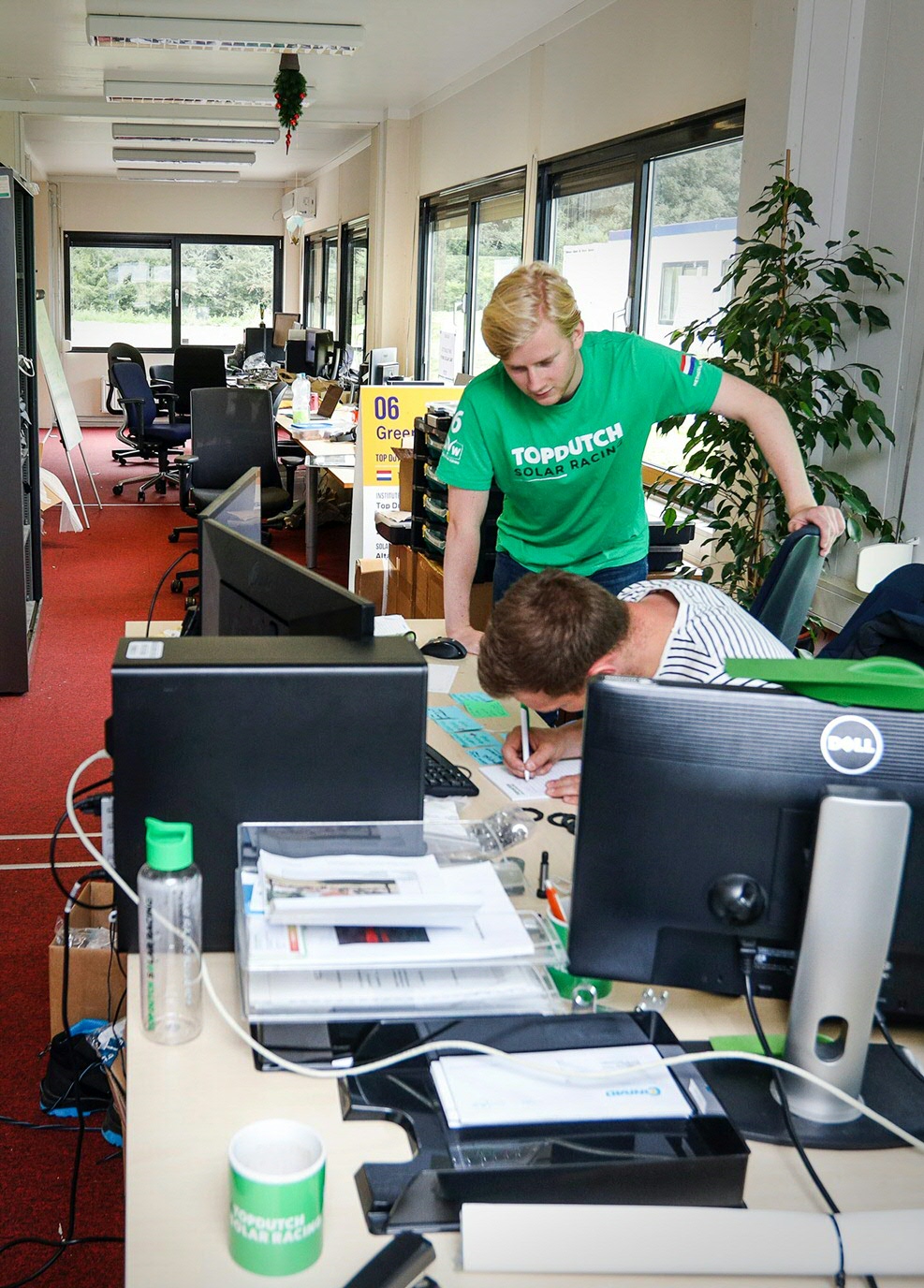
Team spirit
He enjoys his role as leader of the Groningen delegation. ‘For me, it is all about the team. How do I get everyone moving so that we can present something that another team cannot? This project is a playground, the chance of a lifetime. It is up to us to decide how to run this. And it is fantastic to be so well trusted, for example by the President of the Board of the University, Jouke de Vries. The University granted us a subsidy without any further requirements. “Go for it,” he said. I will never experience this sort of freedom in my career again.’
Defeated
At the same time, this amount of freedom requires a serious amount of responsibility. The budget of Top Dutch Solar Racing amounts to around one million euro. And that is without mentioning the coronavirus pandemic writing off their main goal, competing at the World Solar Challenge in Australia, at the beginning of the year. Strategist Rick Geling (21) remembers as if it were yesterday: ‘On 12 February, the pin dropped. In the first few days thereafter, we were all defeated. How were we to proceed? How would we find motivation without competing in a race? Would it be financially responsible to continue?’ The uncertainty led to four of the five mechanics team members quitting at the start of this year, says Physics student Ruben Joosten (22). Suddenly, he was working alone.
A new adventure
Even Aymar was at his wit’s end for a while. ‘The only way to get the team back up-and-running again was by offering perspective. There had to be an alternative race, so that everyone would think: if I stop now, I will miss out on a great adventure. In consultation with the other teams, we landed on Morocco. Shortly thereafter, we as the Groningen team decided to keep going. We decided to just continue building the car, keep calm and carry on. Literally, the slogan on the wall there says: “Let's build this f%^king solar car!” We want to show the world that we can do it.’
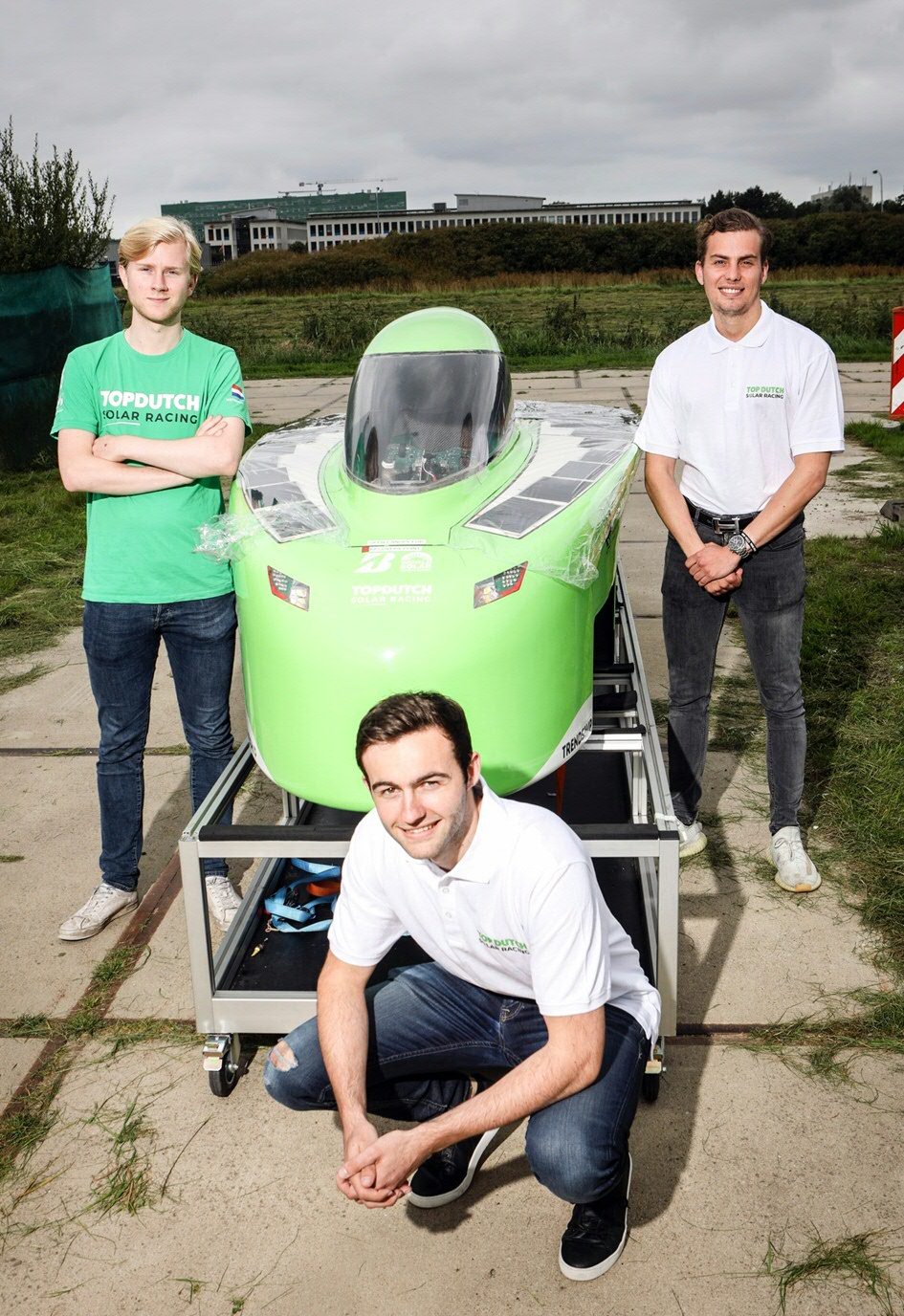
Strong together
And so, the Groningen team has been working under immense time pressure since the start of the summer on their completely self-designed solar-powered car. ‘Every day, I jump at the approaching deadline, even though we quickly managed to recruit two new team members and are receiving a lot of support from the 2019 team. The most important thing is to end up with a car that can actually be driven. We work around the clock, from early in the morning until late at night every day, and there are still always slightly too many tasks.’ In the race against the clock, Top Dutch Solar Racing can fortunately count on help from its numerous partners in the Northern Netherlands. For example, UG researcher Eize Stamhuis provides advice on aerodynamics, Professor Arthur Veldman gives input on the simulations, and racing strategist Rick can count on the knowledge of the data analysts working at TKP Pensioen.
Meticulous preparation
Together, everyone is focused on making sure that the car can compete as optimally as possible, Rick explains. During a strategy trip, he scouted every metre of the five stages of the route in Morocco – amounting to a total of 2,500 kilometres. ‘We will soon have to face a range of different environments: open planes, mountains, villages, and cities. The conditions will vary considerably from our original destination in Australia. We are now building a model on the basis of algorithms, mathematics, and physics to be able to make decisions as we go. Where should we be driving slower to capitalize on the sun’s power? How will we bridge differences in altitude? Completing the entire race will be a constant balancing act.’
Full of bravado
To make sure that the competition does not get any heads up, Aymar strictly forbids the photographer to take any photos of the futuristic solar-powered car, the planning board, and the crucial sketches on the wall. At the end of October, Top Dutch Solar Racing will face six competitors in Morocco in the so-called challenger class, in which the top teams that would usually also be competing in Australia will kick off. Despite the blows, there is no lack of bravado. Aymar: ‘We have to be realistic, we have had a tricky time. But if you are aiming for second place, you may as well not bother competing. It is not the best car that wins, it is the best team. I think that we could very well be that.’
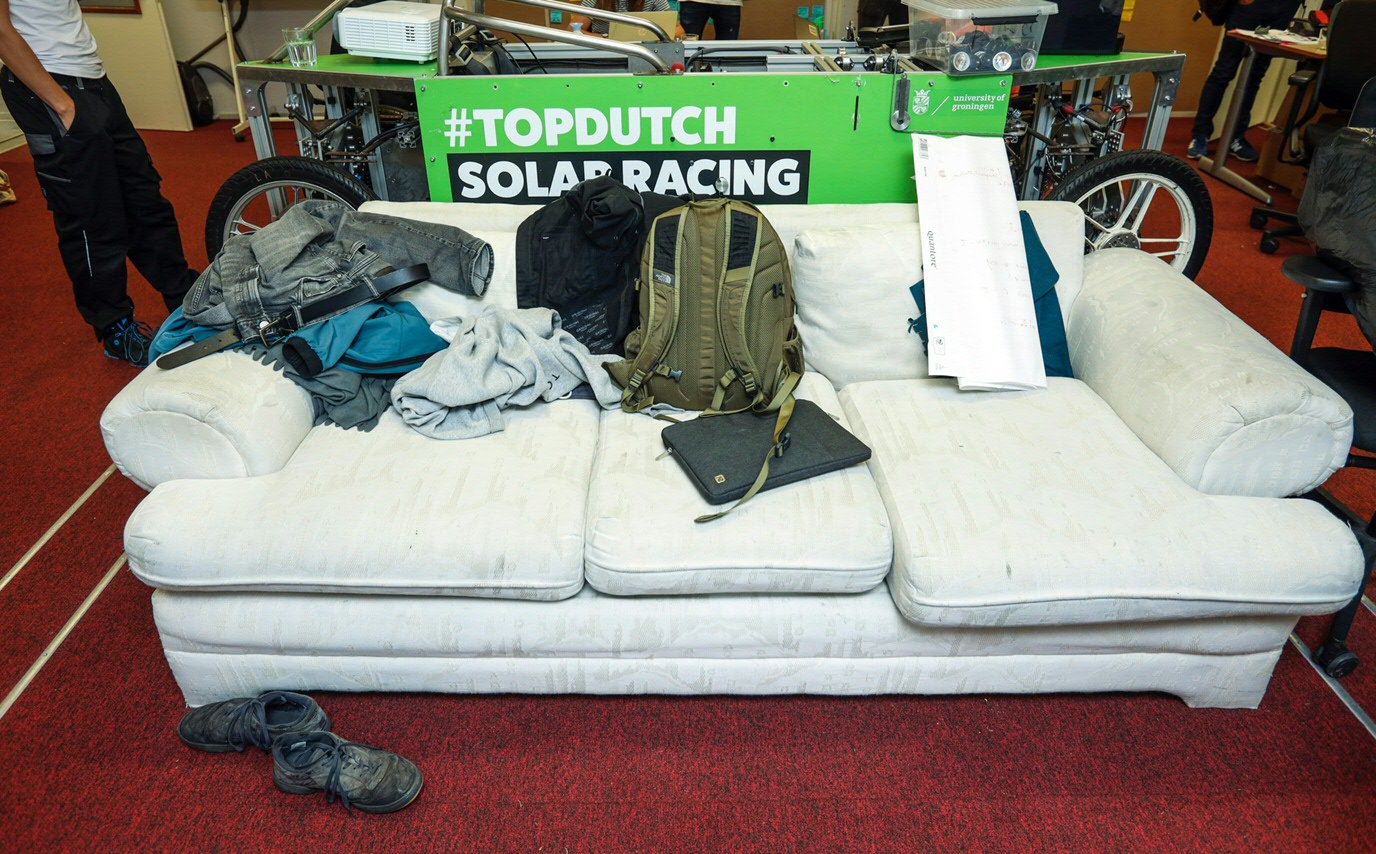
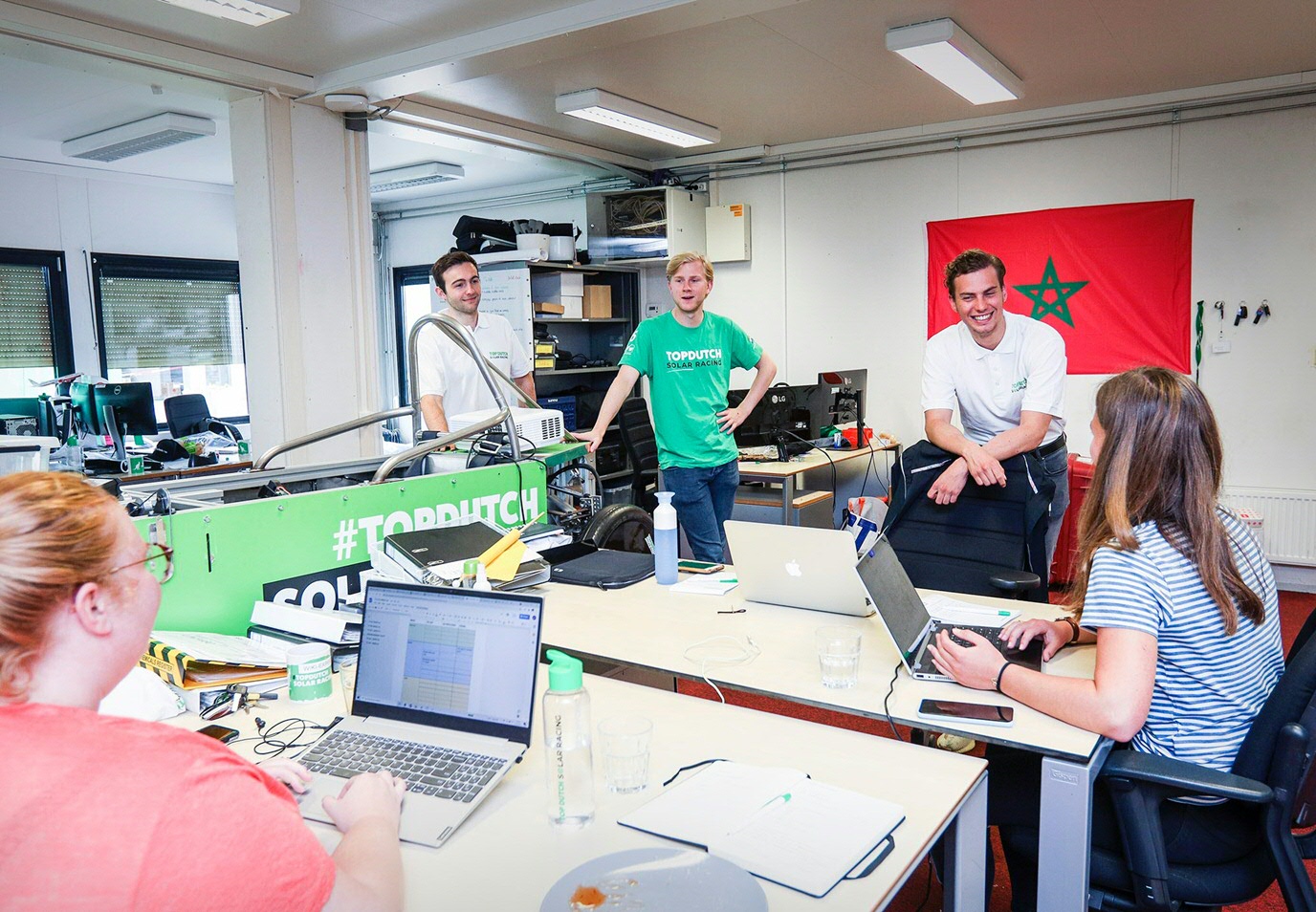
More news
-
11 December 2025
Stormy planets and an unexpected atmosphere
-
09 December 2025
Faculty of Impact Grant for new brain cancer treatment
